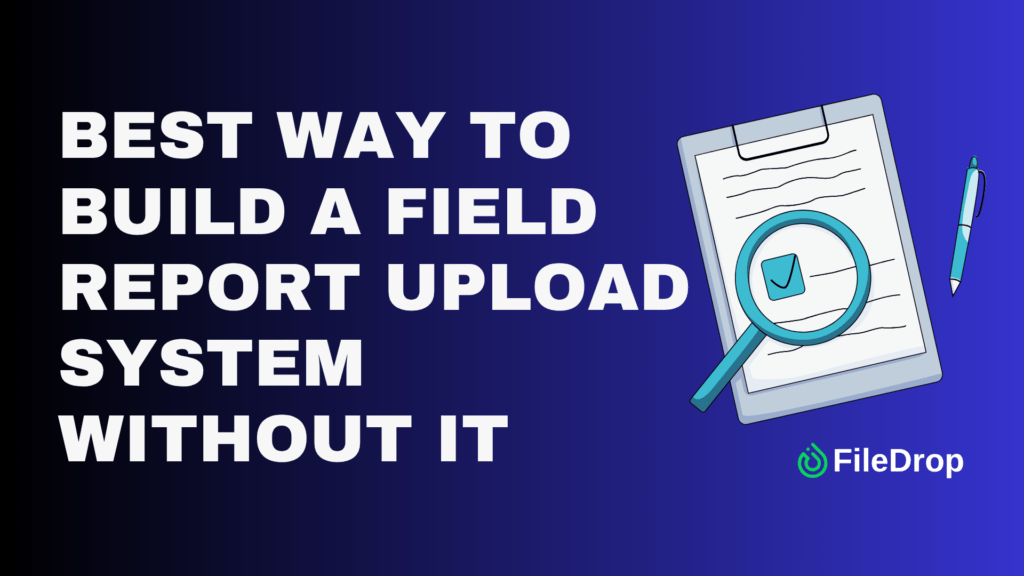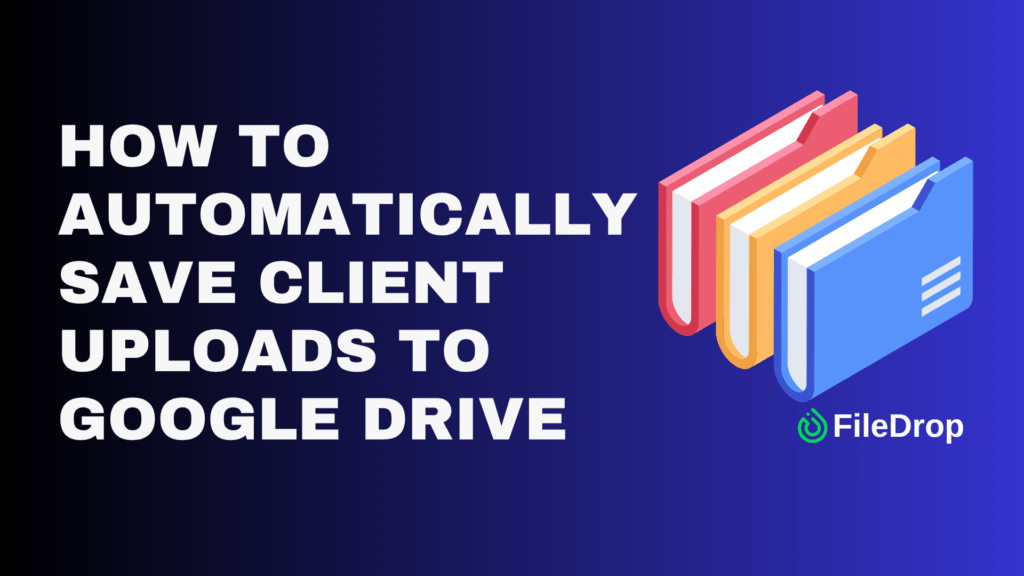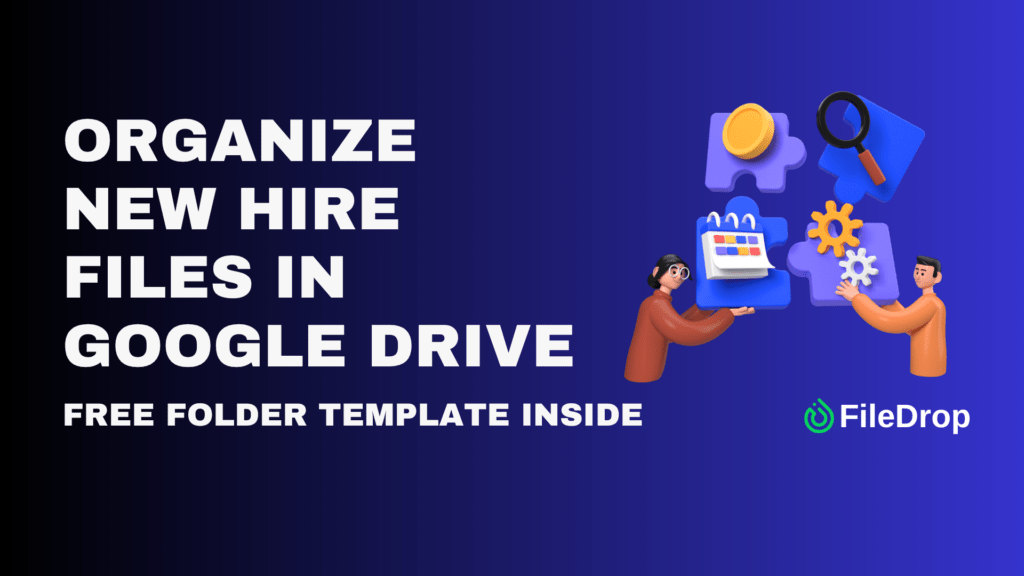Field teams—whether in construction, inspections, logistics, or site maintenance—generate a high volume of reports daily. These include incident reports, inspection checklists, delivery confirmations, safety documentation, and site photos.
But getting these files back to headquarters securely and properly organized is often a mess:
- Files end up sent through personal email or messaging apps
- Photos get mixed with unrelated media on phones
- Incorrect filenames make sorting slow and error-prone
- Managers have to manually drag uploads into the right project folders
- IT is asked to “build a portal” — which never gets prioritized
What if your field agents could simply open a secure link, upload their reports, and everything automatically lands in the correct Google Drive folder—organized by project or date—without any IT setup?
That’s exactly what the FileDrop File Forms feature allows you to do.
What You Can Build (In Under 10 Minutes)
Using File Forms by FileDrop, you can create a Field Report Upload Portal that:
- Gives each project or site a dedicated upload link
- Automatically stores uploaded reports into organized Google Drive folders
- Lets you require project name, site code, report date, and comments before upload
- Sends your team a notification email every time a new report is submitted
- Works on mobile phones, no login needed for field staff
- Requires zero IT involvement or custom development
Step-by-Step: Create a Field Report Upload System Without IT
Collecting field reports shouldn’t require IT setup, shared drives, or back-and-forth messages. Yet for many teams, getting site photos, inspection PDFs, delivery confirmations, or safety reports from the field still means dealing with email attachments, messaging apps, and manual uploads to Google Drive.
With FileDrop, you can build a field report upload system in minutes—no technical skills required. Field teams simply tap a link, upload their report from any phone or tablet, and the files are automatically organized into your Google Drive with proper labels.
Here’s how to set it up step by step.
Step 1: Create Your FileDrop Account
- Visit https://app.getfiledrop.com/register
- Sign up using your work email or Google Login
- Once registered, you’ll enter your FileDrop dashboard
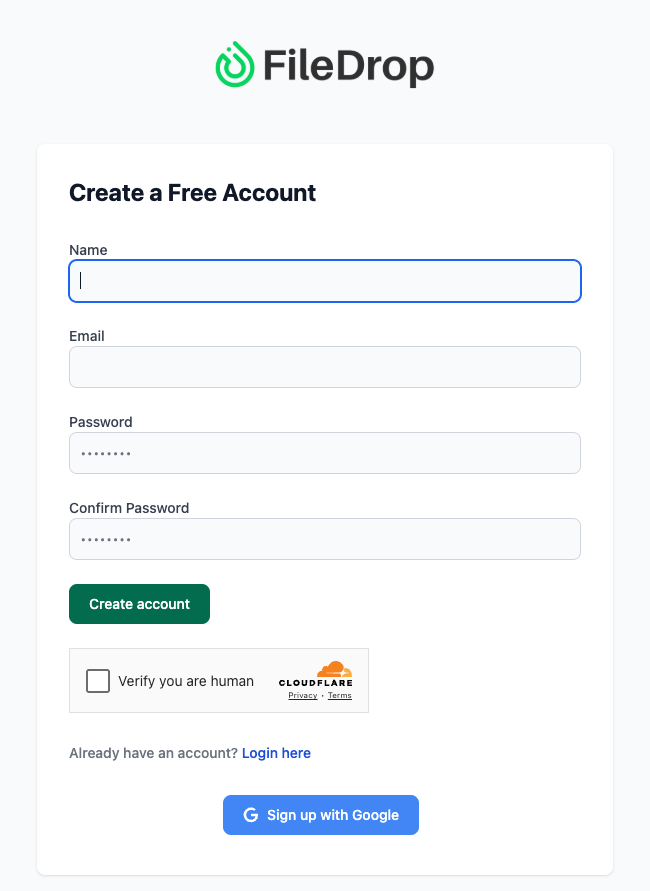
Pro Tip: Use a centralized email like operations@company.com so all team submissions stay under one account for easy management.
Step 2: Access the File Forms Dashboard
- In the left-hand menu, click File Forms
- This is your control center to create and manage field upload forms
- Each form can be specific to a project site, team, or report type
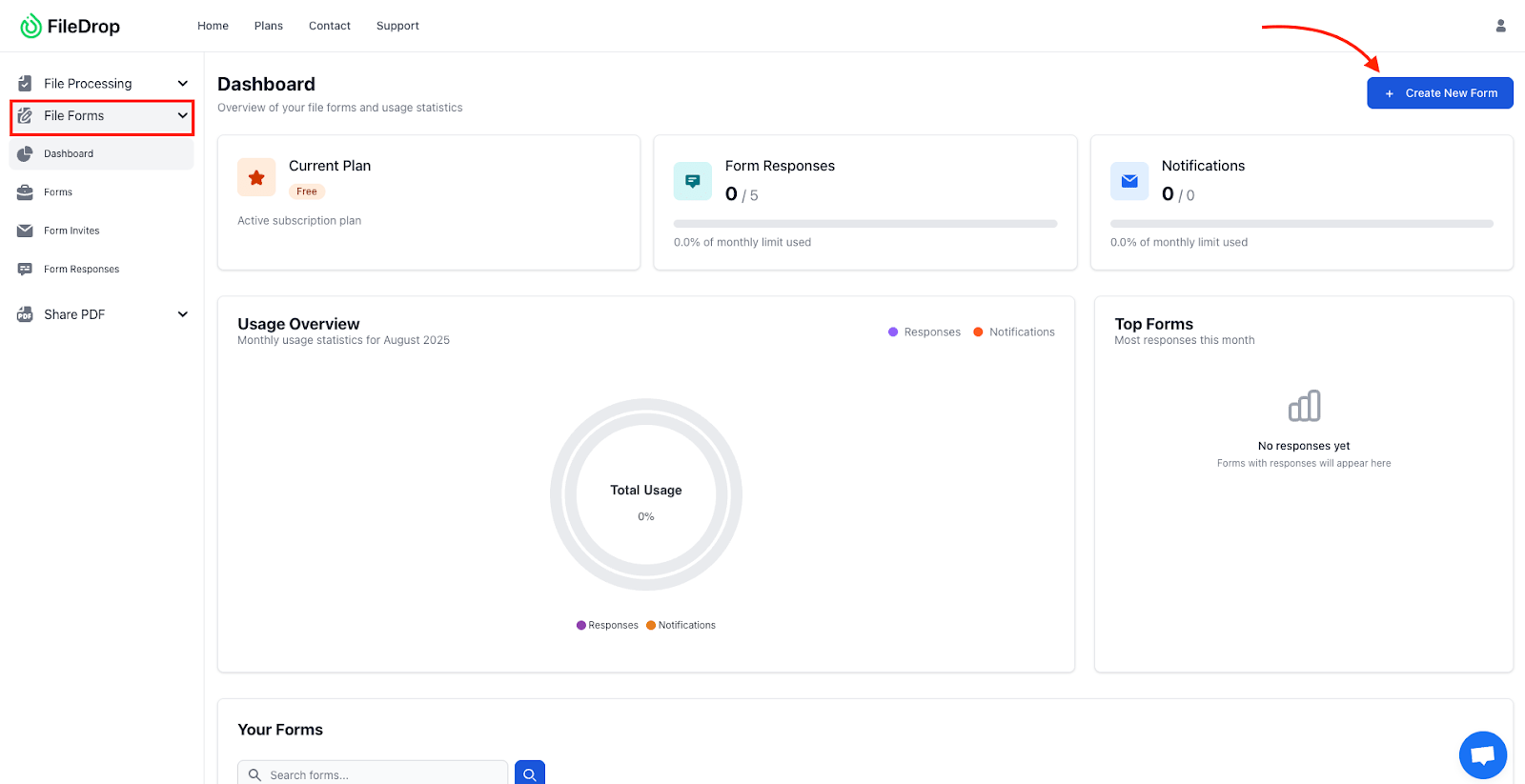
Example forms you may create:
- Daily Field Report Upload
- Safety & Incident Upload Portal
- Logistics Delivery Confirmation Upload
- Project A – Field Documentation Upload
Step 3: Create a New File Form
- Click New File Form
- Name your form clearly, such as:
- Field Report Upload – Project A
- Construction Site Daily Log Submission
- Enable “Separate Submission Folders”
- This ensures each upload generates its own Google Drive folder automatically, labeled with the uploader’s input (such as Site Name or Date) — eliminating messy shared folders.
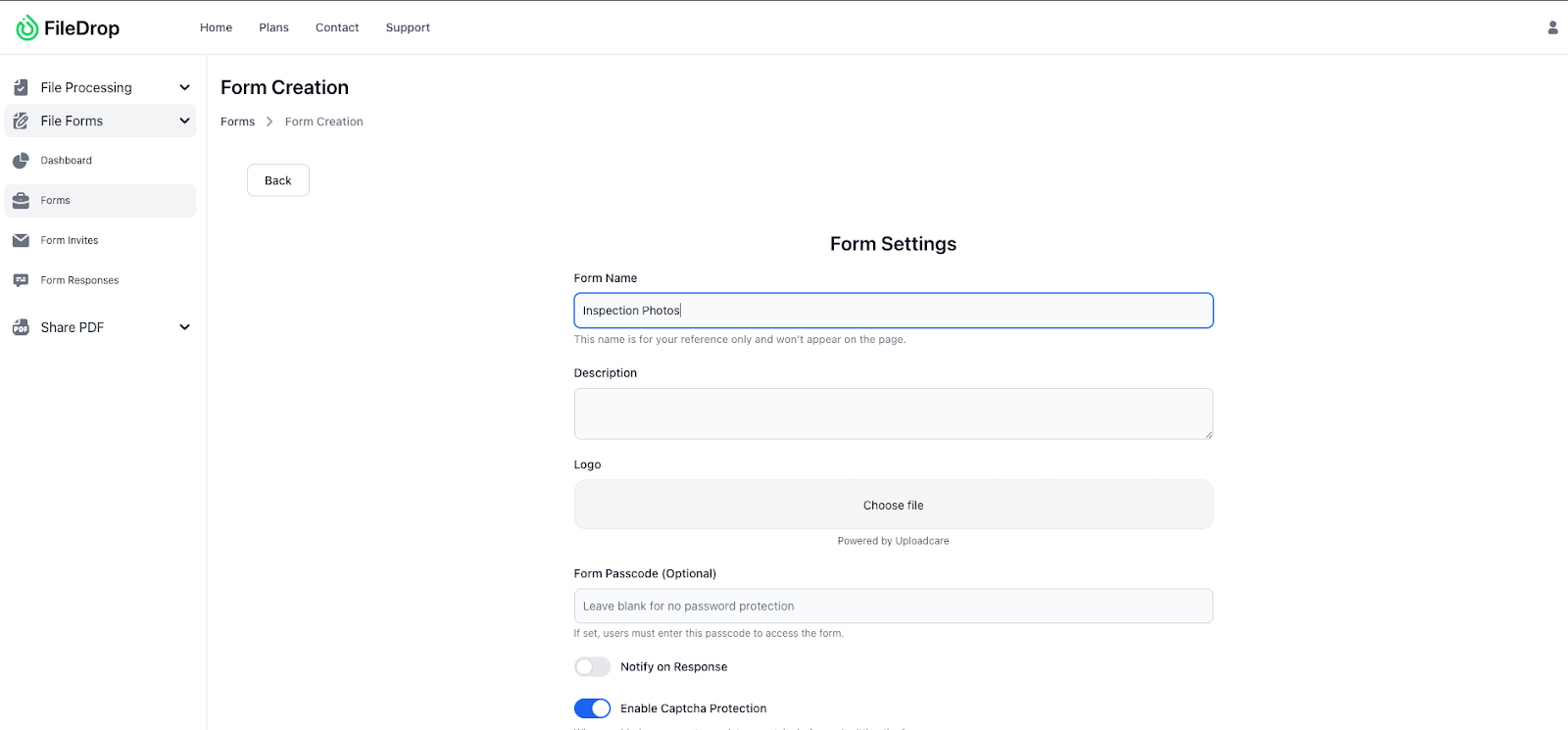
Workflow Tip: This is extremely useful when multiple field reports are submitted at once from different teams or contractors.
Step 4: Connect Your Google Drive
This step automates the entire process — no more downloading and re-uploading files manually.
- Scroll to Google Drive Integration
- Click Connect Google Drive
- Grant access and choose a destination Drive folder
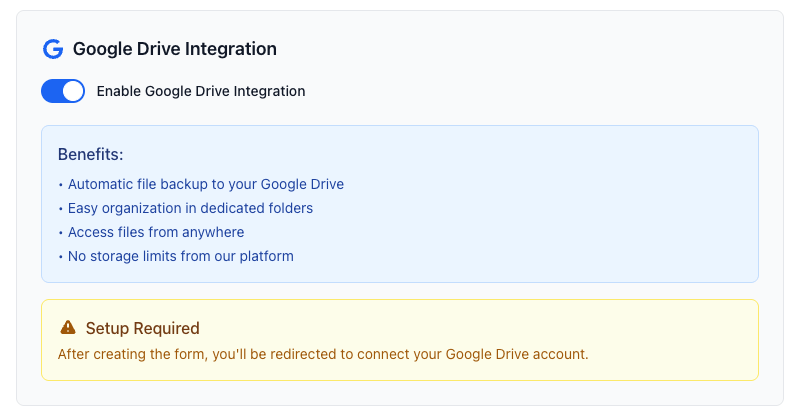
Suggested folder setup:
| Google Drive └── Field Reports ├── Site A ├── Site B ├── Safety Audits ├── Delivery Confirmations |
Once connected, every report submission will be automatically stored in Drive, using the folder structure you define.
Why this matters:
- No manual file sorting
- Files backed up instantly
- Drive search and sharing stays clean and organized
- Perfect for audits, documentation compliance, and future reference
Step 5: Add Form Instructions and Branding
Make the upload page clear and professional so field users know exactly what to do.
- Set a title like: “Upload Field Report – Project A”
- Add instructions, for example: “Use this form to submit daily reports, inspection photos, and confirmations. All uploads automatically save to our Google Drive for documentation.”
- Upload your company logo
- Match brand colors for consistency and trust

Why branding matters: Even contractors and external partners instantly recognize that they’re uploading to your official system — not a generic tool.
Once activated, you’ll get a secure shareable link.
You can distribute it via:
- QR codes posted on site boards, badges, or equipment
- Pinned in WhatsApp/Telegram/Viber field team chats
- Internal dashboards or Notion/SharePoint systems
- Included in contractor onboarding packets
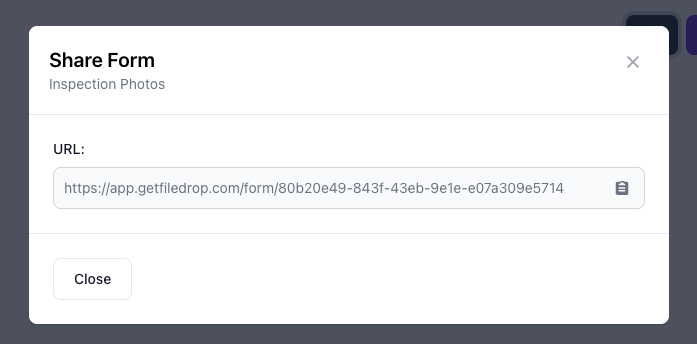
Field staff simply tap, upload, done — no login, no training needed.
Step 7: Review and Manage Submissions
Once reports begin flowing in:
- FileDrop automatically generates folders in your Google Drive for each submission
- Each folder will be named using form data like Site Name + Date
- You can open Drive any time to review, sort, archive, or share reports with management
Efficiency Tip: Use Drive search queries like site-a 2025 or incident report to instantly pull historical reports.
Step 8: Sync Upload Data to Google Sheets (Optional)
If you want a live, trackable log of all field uploads, enable Google Sheets sync.
- Click the Google Sheets icon next to your form in FileDrop
- A spreadsheet will be generated with automatic entries for each upload
Your sheet will include:
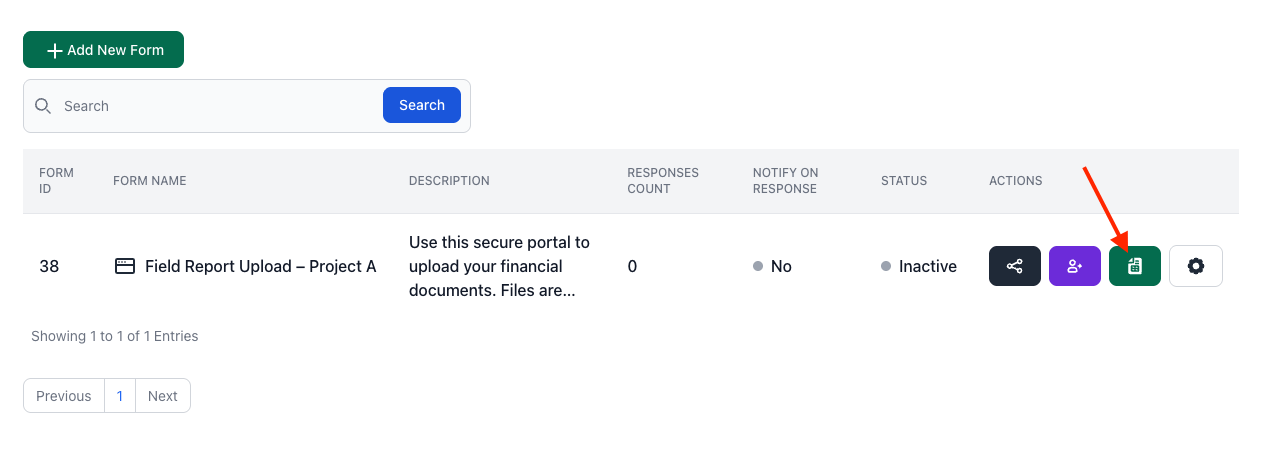
- Uploader Name
- Site/Project Name
- Date of Submission
- File Link in Drive
- Notes/Report Type
This is perfect for tracking daily compliance, subcontractor submissions, or safety documentation timelines.
Real-World Example: Construction Inspection Teams
A construction company managing 7 active sites set up one File Form per site:
| Site | Upload Link | Google Drive Folder |
| Site A | /field-reports/site-a | /Drive/Field Reports/Site A |
| Site B | /field-reports/site-b | /Drive/Field Reports/Site B |
| Site C | /field-reports/site-c | /Drive/Field Reports/Site C |
Supervisors on mobile now submit inspection photos and PDFs instantly, and the back office has all files organized in real-time without chasing teams or renaming files manually.
Why This Beats Email or WhatsApp
| Old Way | FileDrop Way |
| Files mixed with personal photos | Dedicated upload link |
| No organized storage | Automatically saved into proper Drive folders |
| Managers ask “Which site is this for?” | Upload form forces metadata |
| Lost PDFs in chats | Instant notifications with file links |
| IT involvement to build custom portal | No IT required — set up in minutes |
Bottomline
You don’t need an IT department or custom development to build a structured and professional field report collection system.
With FileDrop + Google Drive integration, your field teams can:
- Upload reports from any mobile device
- Attach required details for instant organization
- Automatically back up reports to the correct Drive folder
- Keep managers instantly notified — without follow-up messages
It’s the fastest and most reliable way to collect and organize field reports without chasing, renaming, or dragging files into folders manually.
Frequently Asked Questions
- Can contractors or external teams upload too?
Yes — no login required. Anyone with the link can submit files securely, but they cannot see other uploads.
- Can we create multiple upload links for each team or region?
Yes. You can create unlimited File Forms — one per team, site, or upload type.
- Can we disable or change links later?
Yes. You can turn forms on/off at any time or change the Drive folder destination with one click.
- Does it work on mobile with weak connections?
Yes. The upload page is optimized for mobile and works even over low bandwidth.
The Bottom Line:
One keeps you awake. The other gets work done.
A month of coffee: $150
A month of FileDrop: $19
Why not have both?
